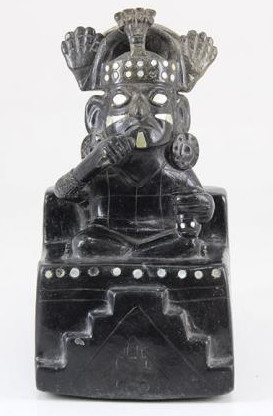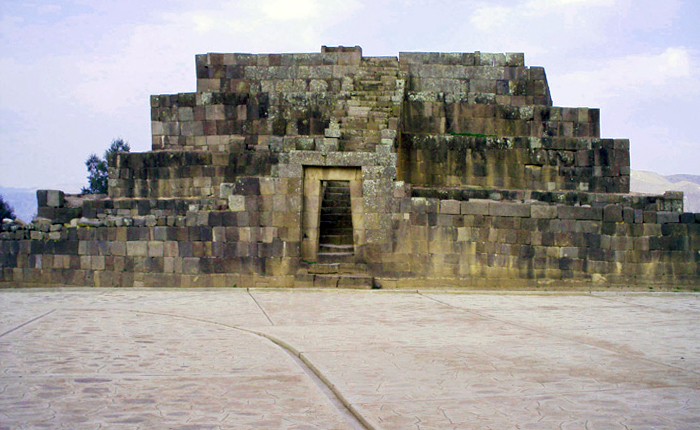Captions
It's all a rabbit on the moon,
Ships sailing in the clouds,
Dragons in the wood grain,
Wil o wisps in the forest mists.
DolphinWords
Notes: a motif has elements, it's said...but what if an element has elements?...does that make it a motif?...an element that has elements is a motif?...hmmph...nothing is simple...the ushnu platform has me puzzled...that door way in the center...

https://thetinkuy.wordpress.com/the-bicephalic-serpent-as-the-milky-way/
http://treeinthedoorvideo.blogspot.com/2019/04/otinotes41719.html
unquote
from earlier post when I went on about the step motif, the half a chacana, the crowstep...on that figurine is the puzzling triangle too, of the step fret triangle motif, here joined together...in the following pic are the step motif with central rectangle, the doorway?...and the step fret triangle, the triangle a doorway?

https://www.researchgate.net/figure/Codex-Nuttall-15-depicts-temple-variously-identified-as-Quetzalcoatls-Temple-of_fig17_231942957
and, right now, I'm scratching my head at what I'm seeing...the crowsteps have a small rectangle in their centers, like a door
http://treeinthedoorvideo.blogspot.com/2019/05/otinotes5119.html
unquote
a long reach, but a really neat one, is that the step fret triangle represents Ursa Major, the Big Dipper/Twisted Gourd; and the Chacana, half of chacana, one quarter of a chacana!, step motif, crowstep, represents the Southern Cross...that pic above is from Mesoamerica...
from earlier post...and this from yesterday...
quote

https://smarthistory.org/what-is-an-inka-ushnu/
unquote
yesterday I went on about the three ushnu stones...and the three Mayan creation stones...a cooking plate, or bowl, over a campfire needs three supports/stones minimum...if that is where the stones motif comes from then it can be very old...old as the invention of fire...a curio is a fire drill is often associated with a fret like motif, the swastika, and too, the circumpolar stars, Ursa Major...
quote
In a Paper read before this Society, 15 May, 1879, printed in Archaeologia, vol. XLVII. pp. 157–160, on “The Fret or Key Ornamentation in Mexico and Peru,” I showed that this form or symbol was there without doubt emblematic of water, and probably adopted independently of Western or Old World influence; and at the conclusion of the Paper I threw out a hint that the fylfot or swastika was an old Aryan symbol, connected with the older sky or air-gods, as represented by Indra and Jupiter Tonans and Pluvius, and not found in the New World. Since then I have gone very fully into a further investigation as to the general history and meaning of that ancient and mystic symbol; and believe I have arrived at a satisfactory solution of a question which has long been a puzzle to mythologists and antiquaries; but one which—in spite of the later labours and discoveries of Dr. Schliemann, Bernouf, Max Müller, of Ludvig Müller of Copenhagen, and most recently of Mr. Edward Thomas, the eminent numismatist —I believe, with Eergusson (Tree and Serpent Worship), has not yet been fully solved.
... ... ...
The Greeks used the thorn-tree for their frictional συρειη; and not unlikely the pramantha itself, or upright fire-stick used in drilling, was the ancestor of the caduceus and of the myth of Prometheus; some attach a phallic meaning to it.
... ... ...
It may here be noticed that Dr. Schliemann, in his “Troja,” p. 122, states that the fylfot has been found in Yucatan and Pueblo in the New World; I should feel strongly inclined, however, to consider its appearance there as only a very possible variety of the Key-pattern (see fig. 20 and 23, Pl. XX.), so common in Mexico and Peru. I have never so far been able to find a true example of the  in any work on Mexico,. or in any museum; the nearest approach to it resembling fig. 13a, Pl. XIX.
in any work on Mexico,. or in any museum; the nearest approach to it resembling fig. 13a, Pl. XIX.
unquote
that last bit is a dovetail with a thought re-occurring to me...that the step fret to the Mesoamericans and Andeans was like the swastika was to the Germans/Nazis...for awhile, my algo feed on youtube was feeding me old WW2 and between the wars videos...you look at one, you will look at more...lots of clips of Towns in Germany between the wars, lots of Nazi parades and stuff...looking at them was like watching HBO's Man in the High Castle...it's disturbing to the max what a few motifs can stir up in the hands of propagandists...reading the story of Eduard Seler, the archaeologist working in 19th century Mexico, I had the misgiving that his motif studies got picked up by the Nazis...last season I delved into this a bit with posts about the Black Sun motif, which I tracked to a puffer fish's skin around its eye!...Seler doesn't look to be a, what to call it, a Himmler...Himmler put together the Nazi crew of archaeologists, portrayed in movieRaidersOfTheLostArc, that scoured the world for artifacts, artifacts hopefully that would prove their pre-supposition that Germans were a master race...the youtube clips are full of such sorts, Himmlers, promoting Aryan master race stuff...the comment sections rife with same...and I'm not sure who, or exactly where, that last bunch of quotes comes from...find it in a sec...but that last bit is a curio:
quote
I should feel strongly inclined, however, to consider its appearance there as only a very possible variety of the Key-pattern (see fig. 20 and 23, Pl. XX.), so common in Mexico and Peru. I have never so far been able to find a true example of the  in any work on Mexico,. or in any museum; the nearest approach to it resembling fig. 13a, Pl. XIX.
in any work on Mexico,. or in any museum; the nearest approach to it resembling fig. 13a, Pl. XIX.
unquote
that is exactly what I find in my web image browses!...the Andeans and Mesoamericans didn't latch on to the swastika...the greek keys, which the Spanish name for step frets, grecas, comes from, often morph into swastikas...while step frets look like the greek keys, they don't do that...and that 'so common in Mexico and Peru', referring to the step fret, I think, is a big curio too, as it is from 1879, near about the same time Seler was saying the same thing!...one thing is how old is the step fret in history, another is, when was it first mentioned as being pan-American in the scholars' discussions?...author's name is Ludvig (nope,
It's:
It's:
The Fret or Key Ornamentation in Mexico and Peru. Paperback – 1882
On sale at amazon...hmmmph...
Müller...brb...well, no, wait, he was being quoted by the journal author, whose name I can't find yet...
Müller...brb...well, no, wait, he was being quoted by the journal author, whose name I can't find yet...
and the bit where Muller goes on about step frets I cant get to...
In a Paper read before this Society, 15 May, 1879, printed in Archaeologist, vol. xlvii. pp. 157 — 160, on " The Fret or Key Ornamentation in Mexico and Peru," I ... of Dr. Schliemann, Bernouf, Max Muller, of Ludvig Muller of Copenhagen, ...
can't find pp 157-160...hmmph...anyway, all that diverted me from the step motif with the rectangle, the door way, the ushnu platform!...that, I do find in the Old World...those crowsteps with rectangles at Persepolis...and, maybe in the Old World too, the crowstep/chacana was the Southern Cross, and the greek key, Ursa Major...it's all a rabbit on the moon, ships sailing in the clouds, dragons in the wood grain...wil o wisps in the forest mists...our imaginations can see anything in anything!...so the peril of captions...
:)
DavidDavid








No comments:
Post a Comment